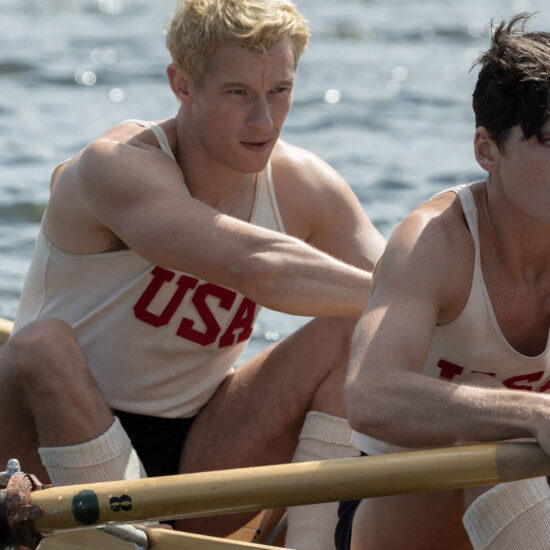
Although technological advancements have led to more detail and a higher quality of photography with digital cameras, many still enjoy the presentation and thought process of using film cameras. Whether used by professionals to achieve a specific look in their growth hacker marketing images, or to capture unique moments and reveal the final picture later, various people use film cameras.
However, with the rise of digital photography and having immediate access to the pictures taken, there has become less of a need for film developers. It has led to fewer available film development services, which can be expensive where they do exist. For regular film users, this adds to the expenses, making film photography less accessible. Nonetheless, you can develop your film at home by yourself, saving you money and giving you control of the whole process.
What Is Film Developing?
As film photography uses chemical reactions to capture images, another chemical process is needed to clarify them and create your film negatives. From the negatives, photographers can project their pictures onto light-sensitive paper to produce the photograph. This process can be done at home, alongside other business tasks using call recording apps and other task management equipment to minimise interruptions in the process.
Specialist Equipment Needed to Develop Film at Home
Most of the developing process happens within the developing tank. It holds the chemicals you use and your film, so it should be leak-proof and prevent light from getting in to avoid common mishaps. Typically, developing tanks are either plastic or stainless steel. Each has its benefits, including temperature retention and durability, but ensure your developing tank and film reels are the same material.
While your film is developing, a film reel holds it within the developing tank to allow your chemical solution to cover every part of its surface. You can get reels that hold multiple film rolls at once, making the process more efficient. Again, reels can be made of plastic or stainless steel to match the developing tank you use. These can take practice to get used to loading them, with plastic reels being easier to load.
At a minimum, you’ll need a developer, fixer, and stop bath for your film. There’s variety in these, such as black and white or colour developer, and powdered or liquid forms. The powder forms may require additional preparation before use but will include instructions. Water is often used for the stop bath and suits the purpose and other solutions. These chemical solutions are used within the film development to help create a clear negative.
Stored within your camera to shoot pictures, knowing where your camera film is, and being able to access it is essential to developing your photos. While removing your film from the camera, avoid direct sunlight as this will damage your photos and produce light leaks. Once it’s removed, store your camera film in a canister until you are ready to develop it. Use all of the film before removing it from the camera, as the film is likely to be one of your biggest expenses.
Some of the chemistry you use will have specific temperatures where it works best. A designated thermometer for your photography development can monitor your liquid temperatures so that the reactions happen at the right speed and produce the expected results. A standard thermometer will work for the job and is available online and in shops.
How to Develop Film
To develop your film, you need a completely dark work area where light cannot affect your images. If you have the space, create a darkroom by blocking out any source of light. Become familiar with the space, so that you feel confident using it, knowing where all your equipment is. When developing photos for your business, use call forwarding and other work management tools while completing the process to avoid interruptions.
If you don’t have the space to create a dark room, use a changing bag to block light from your film. It can carry your film canister and when transferring the film to the developing tank. A changing bag does not give you much freedom to move, and you may want to practice transferring your film first. Once comfortable with your darkroom or changing bag, roll your film onto the reel and put the reels into your secure developing tank.
After securing your film in the developing tank where light can’t get in, allow light into your space and use gloves to mix your developer. Use the instructions on your developer to ensure you get the correct ratios of liquids. Different developers require different dilution levels, and the quantity will depend on the tank you use. You will also need to maintain your liquids at a specific temperature, usually between 68-70°F / 20-21°C or room temperature.
In a separate receptacle, mix your fixer too and set it aside for later in the process. Again, this should have instructions to measure the exact amount of fixer needed with other liquids. Avoid contact between your fixer and the developing solution. If you’re familiar with home developing, you can experiment with the dilution of your fixer and developer to achieve greater clarity, reduce graininess, and change the contrast levels as you would in an editing app.

To get the best results, pre-wash your film by filling your developing tank with room temperature water and letting it sit for one to five minutes. It stops bubbles from forming on your film when you add the developer and brings the tank to temperature, although it is an optional step. Pour out the water once it has washed the film, and don’t worry if it has turned a murky colour. Check your developer solution is at room temperature and add it to the tank.
Check your developer solution instructions for information about how to agitate and how long you should leave your film to develop. These have specific timings to be followed, so account for these with your time management techniques. Tap the bottom of your tank on a flat surface several times to expel air bubbles and start your agitation. There is a range of agitation techniques, and different ones work best with different developer solutions.
Once your film has finished developing, empty the developer solution. Then, add your stop bath solution and follow its instructions, or add lukewarm water to the tank to prevent your film from overdeveloping. After around one to two minutes, the water will stop the development. When using a solution, you may need to agitate the tank again at regular intervals. Empty the tank after completing the stop bath, and the film is no longer developing.
Pour the fixer solution from earlier into your developing tank and agitate it for 30 seconds. This solution is less sensitive to time and temperature than your development solution, so running over your timings is less critical. Generally, the fixer takes about five minutes, and you can use inversion by turning the tank over after every minute. When finished with the fixer, you can reuse it when you next develop the film, so pour it away into a container.

There are multiple ways of rinsing your film, although they all yield similar results. Either you can keep the film in the developing tank and rinse the whole thing for ten minutes, or rinse your developing tank with water for a couple of minutes. Then, take your reels out from the tank and rinse them individually. You can use a sponge to gently soak up excess water, and your film should now show your fully developed negatives.
Leave your film strips to air dry in a moist, dust-free area, such as a shower or bathroom. Hang these up using a clip at each end to prevent the film from curling up. It will take a couple of hours for your film to fully dry, so this is a great point to check your business email monitoring software and catch up on other notifications. Once they are dry, you have successfully created your negatives, and you can use these to print photographs.
Give Home Developing Your Film a Try
With the right tools and this guide to take you through the process, you can easily develop your film at home, giving you retro-feeling photos. It may take practice to get your negatives as clear as possible, with the right amount of contrast, but the result is worth the effort. Also, you should be aware that different solution formulas have different instructions, so even if you’re familiar with developing photos, a new solution could mean a new process and timings.
Home-developing your film can reduce the costs of film photography and allow you to manage other business tasks simultaneously, using tools like a virtual call center and monitoring software. Many of the equipment used can be reused multiple times, making it a good investment if you plan on regularly developing your film. Equally, the tools are easily available, meaning quality film photography can be captured and developed by anyone.
Grace Lau is the Director of Growth Content at Dialpad, an AI-powered cloud communication platform for better and easier team collaboration. She has over 10 years of experience in content writing and strategy. Currently, she is responsible for leading branded and editorial content strategies, partnering with SEO and Ops teams to build and nurture content. Grace Lau also published articles for domains such as Tapfiliate and Easy Affiliate. Here is her LinkedIn.















